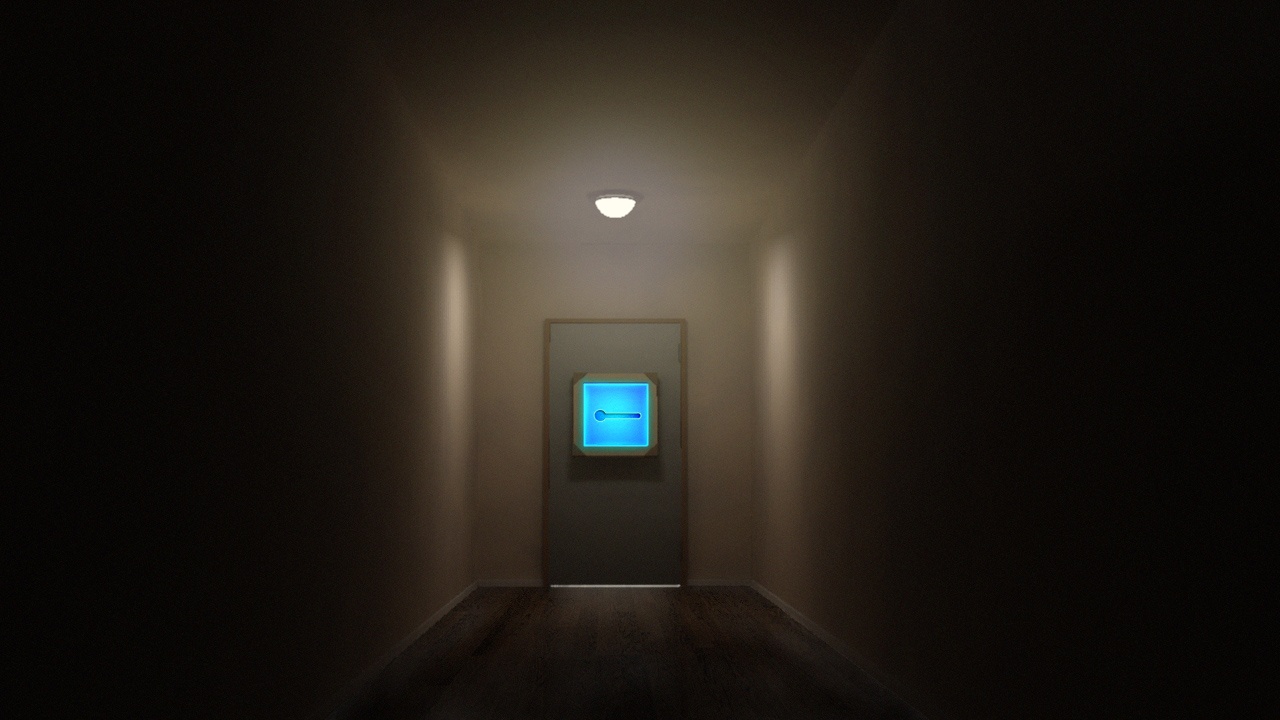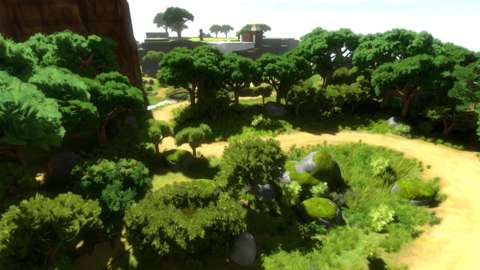E3 2014: Catching Up With Jonathan Blow and The Witness
A mystifying island.
You're in a tunnel. At the end of a tunnel is the door. On the door is a panel with a horizontal line, and a circle on one end. There is no button prompt on the screen, but the panel seems to be something you might be able to interact with, so you press a button, and sure enough, you can touch the panel, drawing a line from the circle to the rounded end of the line. You do this and the door opens. In this way, The Witness has simply and seamlessly taught you the concept at the core of all of its puzzles. The Witness frequently layers new concepts into its puzzles--there were some, for instance, in which I needed to cross over specific marked spots en route from the circular origin point to the goal, and others in which I needed to draw lines separating sections marked by different colors--but it teaches these ideas to you as organically as it teaches you that first, essential concept.
"The idea behind what line you draw changes," designer Jonathan Blow said, "and the idea behind how you figure out the solution changes. You have puzzles where the panel itself has the information, but as you proceed further and further through the game, it's about a gradual broadening of the attention where you're no longer just focusing on what's inside a particular panel but maybe something in the world is gonna tell you about this panel." In this way, The Witness recalls the classic puzzle adventure game Myst, a game in which you often needed to scrutinize details in the world around you for clues as to how to solve the puzzles before you. The Witness also recalls Myst in its tranquil island setting and the feeling of peaceful solitude that setting fosters. But Blow only wants the similarities to games like Myst to go so far.

"We're definitely an homage to Myst in a certain way," he said, "but that way doesn't necessarily include the basic gameplay. I'm going for something different. It's my best attempt at taking that old-timey graphic adventure gameplay where you're exploring and solving problems but doing it with a modern design sensibility, which means things are systemic and not random one-off puzzles where you have to read the designer's mind. They're simplified and streamlined so I try to make it so you're not stumped on interface complexities, or 'I don't know what this lever I just pulled does.' I try to get to the meat of what's interesting and stay there, as opposed to a lot of adventure games where you fumble around, 'I don't know how to open this door so I'm gonna use every item in my inventory on the door.' It's all about avoiding that." Because the puzzles have a consistent logic, it seems as if The Witness should successfully manage to avoid that pitfall.

In my time with the game, I noticed that the open design of the island meant that if I got stumped by puzzles in one area, I could explore for a while and try to solve other puzzles that I found rather than just banging my head against the wall until I hit upon the solution to the puzzle that was giving me trouble. When I mentioned this to Blow, he said, "In a totally linear game, if you hit a hard puzzle and you're stuck, what are you gonna do? But because we're nonlinear, we can have some relatively hard puzzles, and OK, you're stuck on it, but you can do most of the rest of the game, and it's OK to be stuck. That lets us do very challenging puzzles, we don't have to flatten them out. A lot of games have what I think of as pseudo-puzzles, like 'Move this crate so that it covers the switch on the floor.' Why did you make me do that? Games a long time ago had much harder puzzles in places like that, but then you'd get stuck on this hard puzzle and it would be stupid because it's like, I'm playing a beat-'em-up game, but now I'm stuck on a puzzle that's not really what I even bought this game for. But if you like puzzle games, then you don't want to water down your puzzles, so this lets us do puzzles that are pretty strong, and they can be hard sometimes and that's totally OK.”
But what does it all mean? The Witness will have a narrative that is largely communicated via something like audio logs, but those weren't in the build I was playing, so there was nothing giving any narrative context to my surroundings. But still, things had the power to take on meanings of their own. I came across a statue of a figure with its arms raised, and told Blow that it seemed like the sort of thing that a player might find his or her own meaning in, like a viewer can with any work of art. "We're gonna try and leave plenty of space for that," Blow said. Regarding the game's narrative, he said, "We're gonna try to be not too heavy-handed with it, and leave enough space for you to have your own reaction to things." I don't yet know what meanings I might find in The Witness when it finally sees release late this year or early next year, but because of the way it taps into those same wonderful feelings I used to get from games like Myst, I know that I want to go back to the island.
See more coverage of E3 2014 →
Got a news tip or want to contact us directly? Email news@gamespot.com
Join the conversation